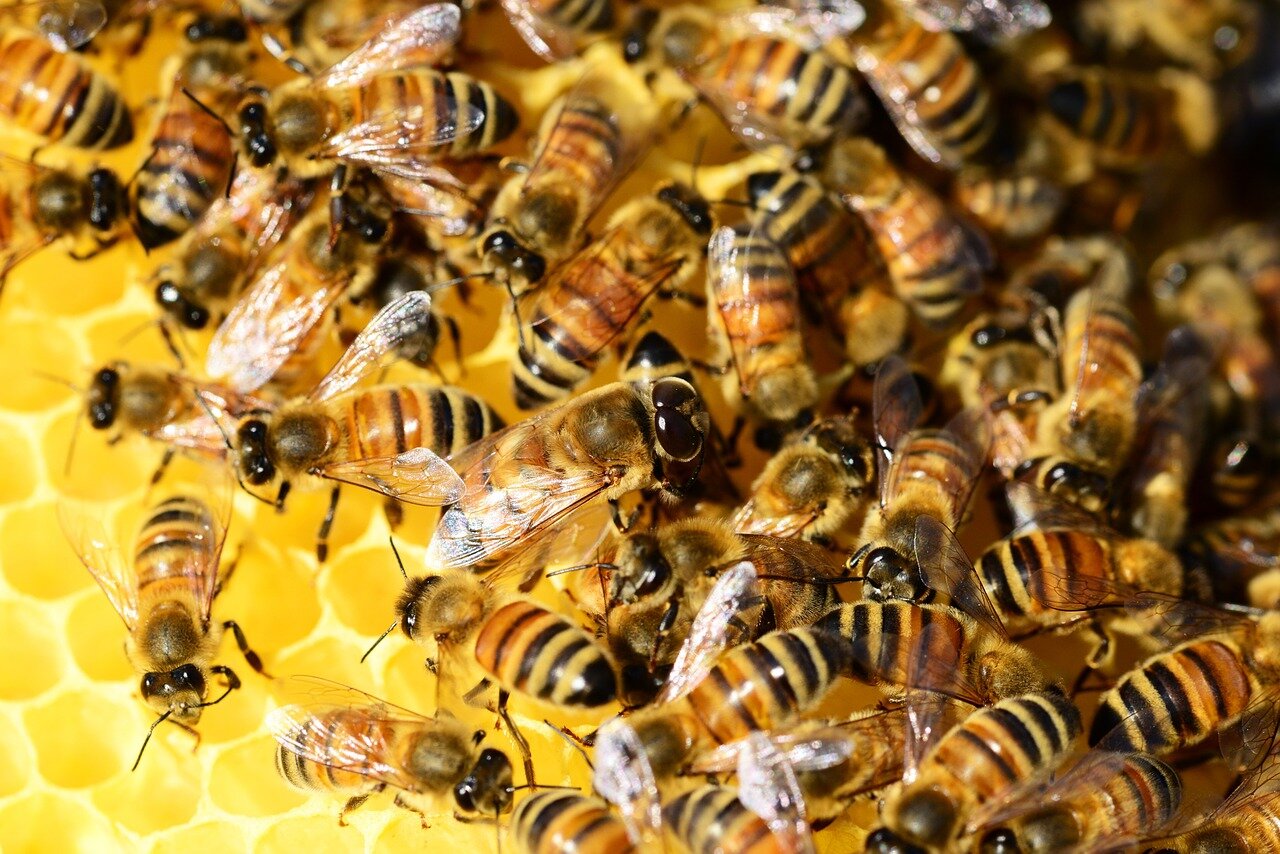Scientists discover the secret to breaking down plastic: Beeswax-eating worms
By Erica Cirino, Safina Center Launchpad Fellow
Federica Bertocchini is a developmental biologist at the University of Cantabria in Spain. Most days she can be found dressed in a white coat working on experiments in her lab. But in her spare time this scientist works in her backyard—wearing a protective suit, gloves and veil—tending to her bees.
Two years ago Bertocchini’s scientific work and beekeeping hobby collided into a major discovery. Like many beekeepers, Bertocchini must pluck pesky wax worms, a type of moth larvae that feed on beeswax and, if left to their own devices can munch through an entire hive. One day while de-worming her hives, she tossed the worms into an old grocery bag and left it outside. An hour later she picked up and inspected the bag and noticed small holes in the part where the worms were concentrated.
While Bertocchini is not a bug expert, she says her background in biochemistry led her to hypothesize that the worms were consuming the plastic bag, which was made of polyethylene—one of the most widely used types of plastics in the world.
“The characteristic chemical bond of polyethylene is also present in wax, although wax is made up of a different mix of molecules,” says Bertocchini.
Honey bees. Photo: PollyDot (Pixabay)
Wax, like plastic, is a type of polymer, or substance made of a large number of the same type of molecule bonded together many times. Both wax and plastic are polymers held together with a string of linked carbon atoms, with other atoms attached to the sides. Because wax worms eat beeswax, Bertocchini thought maybe they contain some sort of specialized enzyme to break down its chemical bonds—and that same chemical may be capable of breaking down the bonds in plastic.
To find out, Bertocchini, with her University of Cantabria colleagues Paolo Bombelli and Christopher Howe, headed to their lab with worms and plastic. They placed 100 worms on samples of a polyethylene bag, watched and waited. They found that the worms created an average of 2.2 holes per hour in the plastic, and overnight consumed 92 milligrams of the bag. These statistics suggest it would take 100 worms one month to break down the average 5.5-gram polyethylene grocery bag. Their paper detailing this experiment was published this week in the journal Current Biology.
Trash, mostly plastic bags, in Karachi, Pakistan. Photo: Zainub Razvi (Flickr)
Polyethylene is the simplest of all commercially produced plastic polymers. Because all plastics have slightly different chemical makeups, could wax worms be capable of breaking down other varieties of plastic, such as polyvinyl chloride (used to make products like clear food packaging and shampoo bottles), polystyrene (used to make food trays and egg cartons) or polypropylene (used to make yogurt tubs and condiment bottles)?
“We do not know that yet, that is an interesting question, definitely worth studying,” says Bertocchini.
The scientists found it is indeed some sort of special chemical on or inside worms that breaks down the polyethylene, and is not just the chewing action of the worms’ jaws that break the plastic down. They determined this by spreading mashed-up dead worms on the plastic and watching the plastic break down before their eyes. It could be an enzyme inside of the worms, or perhaps a certain kind of bacteria in or on the worms’ bodies, that breaks down the plastic—more research is needed to determine which. While the precise aspect of the worms’ biology responsible for breaking down polyethylene remains unknown, the scientists say it converted the plastic into ethylene glycol, a type of moderately toxic chemical used in antifreeze.
Waxworm. Photo: USGS Bee Inventory and Monitoring Lab (Flickr)
Despite the challenges of degrading plastic on a large scale, Bertocchini says the knowledge that wax worms are capable of breaking down plastic could prove extremely valuable in the future. Each year the world produces about 300 million tons of plastic, with 8 million tons of that plastic entering the oceans and millions of tons more being littered on land or dumped into landfills. People wouldn’t sprinkle wax worms over piles of polyethylene, says Bertocchini, but apply the special plastic-degrading chemicals the worms contain.
“The idea would be to isolate the molecules responsible for the biodegradation, produce them in large industrial scale, and then apply that tool to biodegrade polyethylene,” Bertocchini says.
Dolphin playing with plastic bag in Fernando de Noronha, off Brazil’s coast. Photo: Jedimentat44 (Flickr)
Whether or not wax-worm solvents will be developed and mass-produced in the future is yet to be seen. Perhaps it could help get rid of some of the world’s plastic. But, experts say, getting rid of plastic is only one aspect of remediating the world’s plastic problem. The best way to cut down on the pollution is to stop producing and using plastic products.




